Castillo de San Marcos
We began the day visiting the oldest masonry fort in the continental US. The Spanish built it in the late-seventeenth century after Sir Francis Drake attacked and leveled the city of St. Augustine. Was Drake a pirate? It sounds like a pirate-esque thing to do. Not quite. He was a privateer, which is basically a pirate to everyone but the country from which he originated. As long as a British privateer didn’t attack British ships, he was not officially a pirate for that country. The Spanish regarded Drake as a pirate; the British, as a hero.
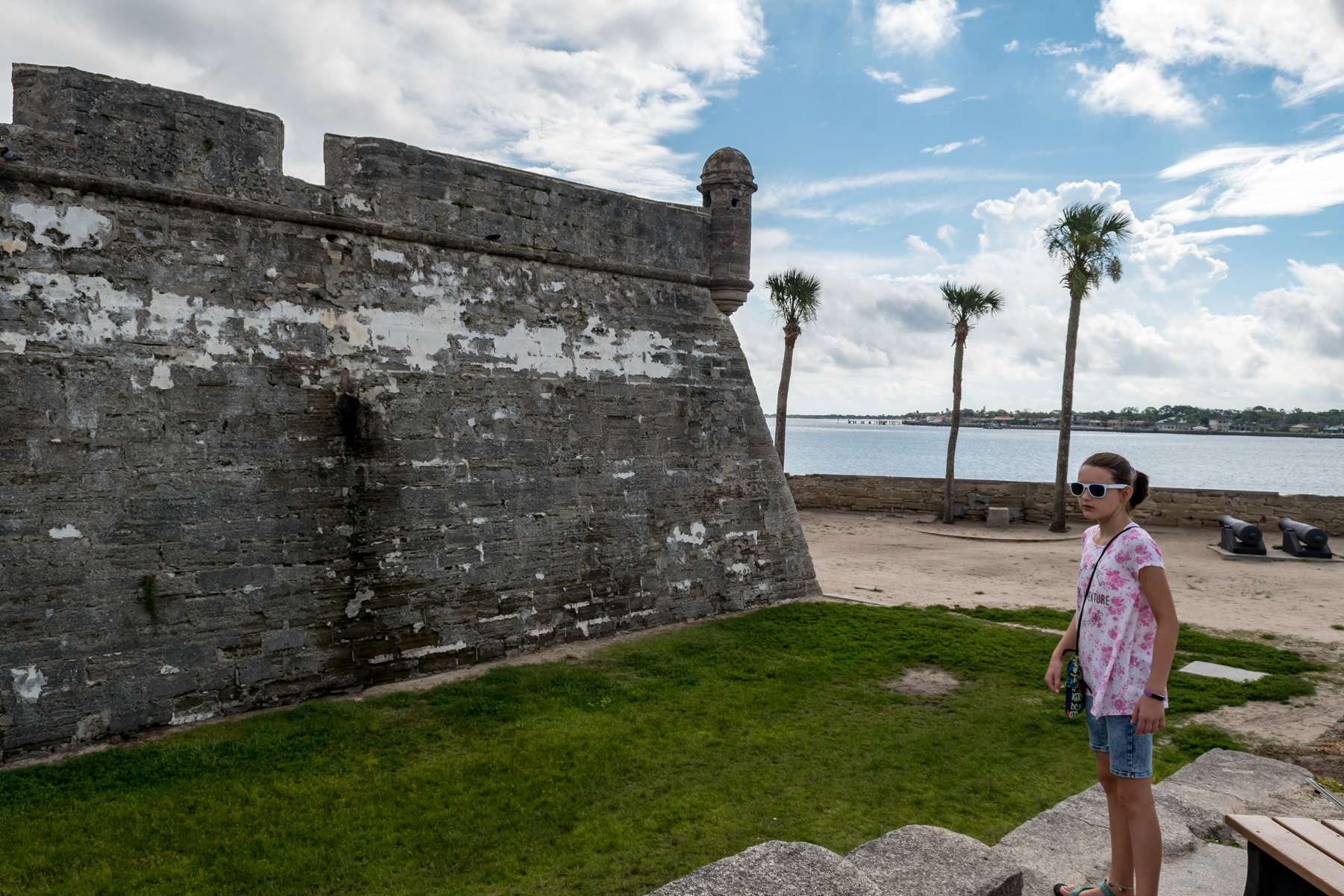
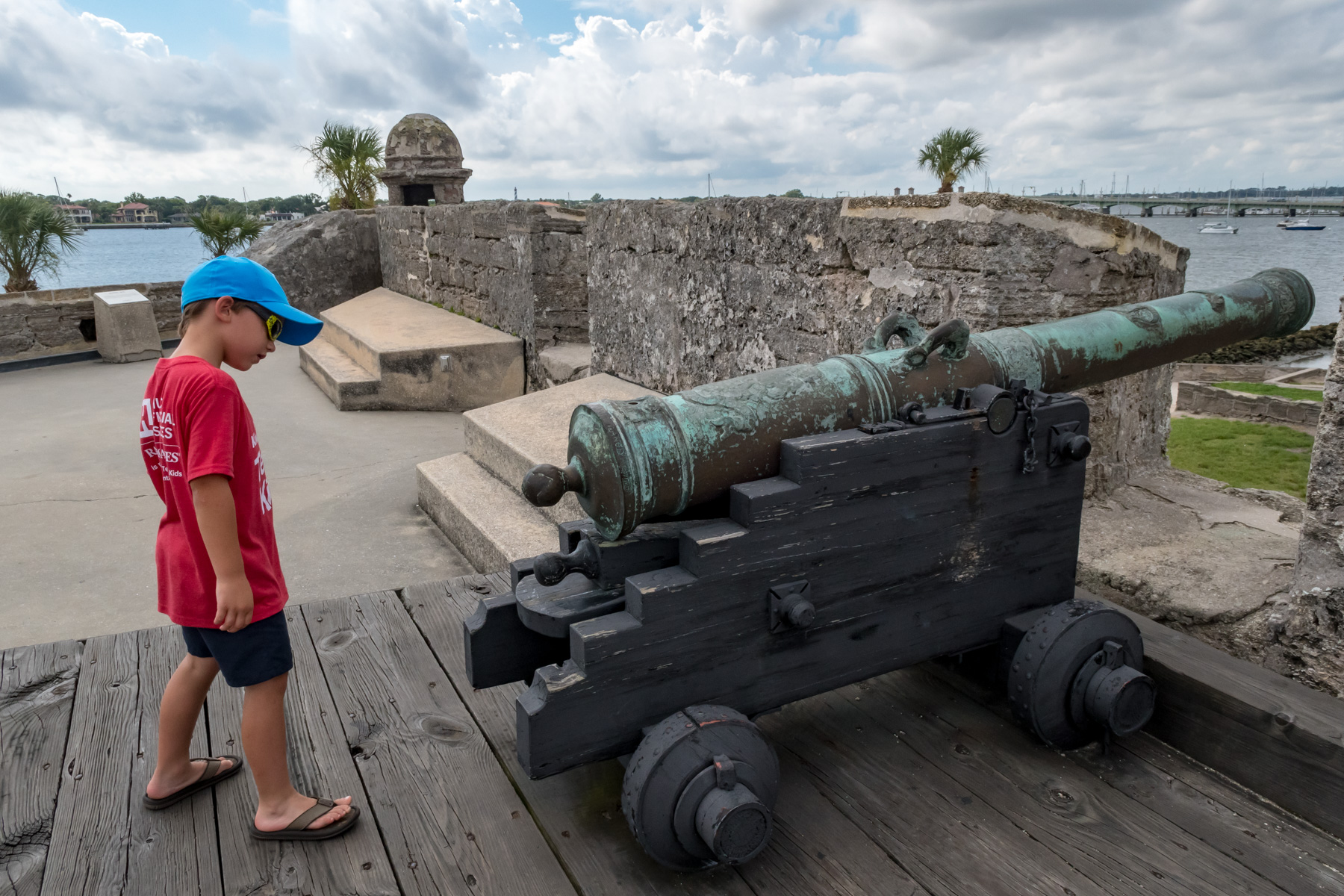

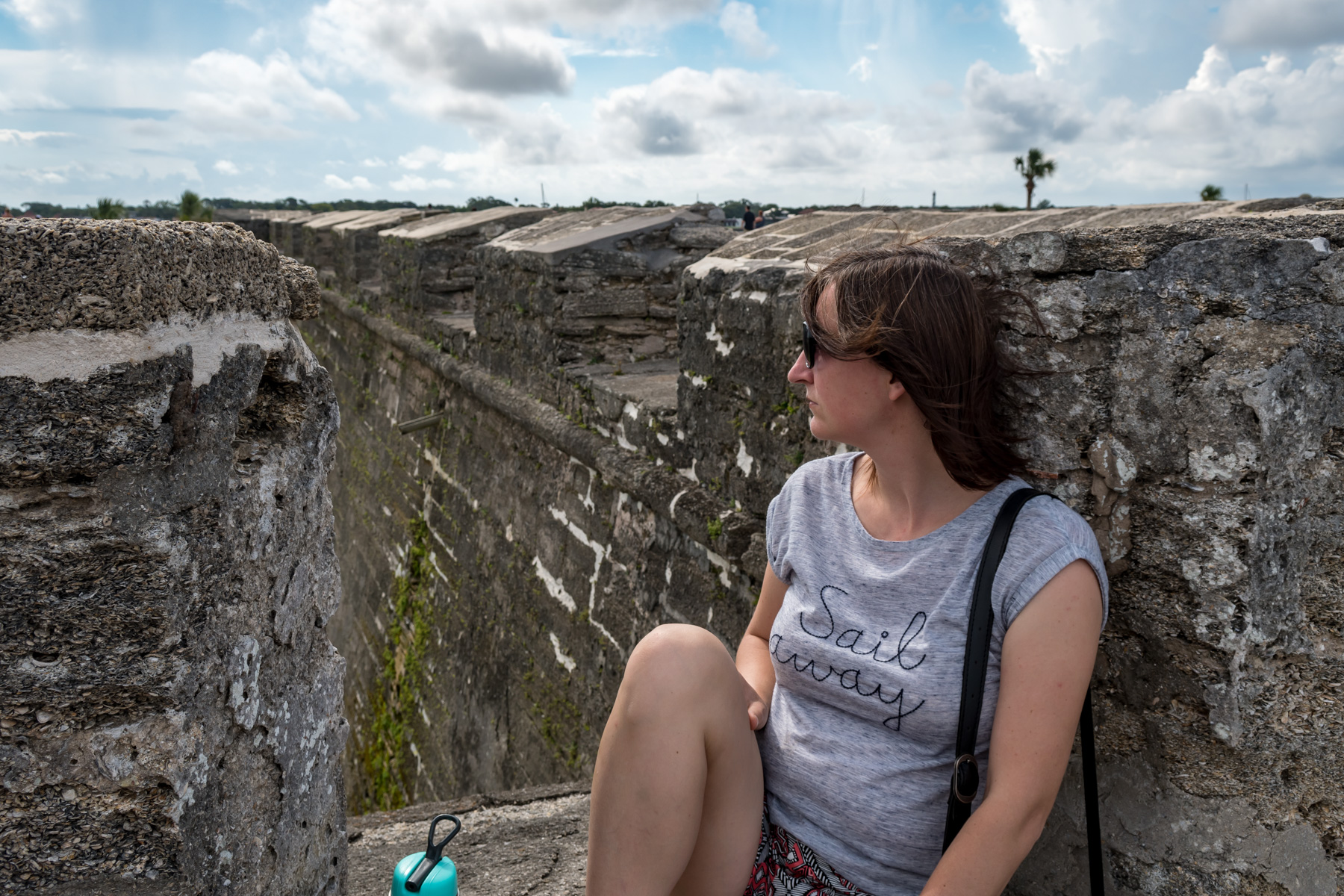

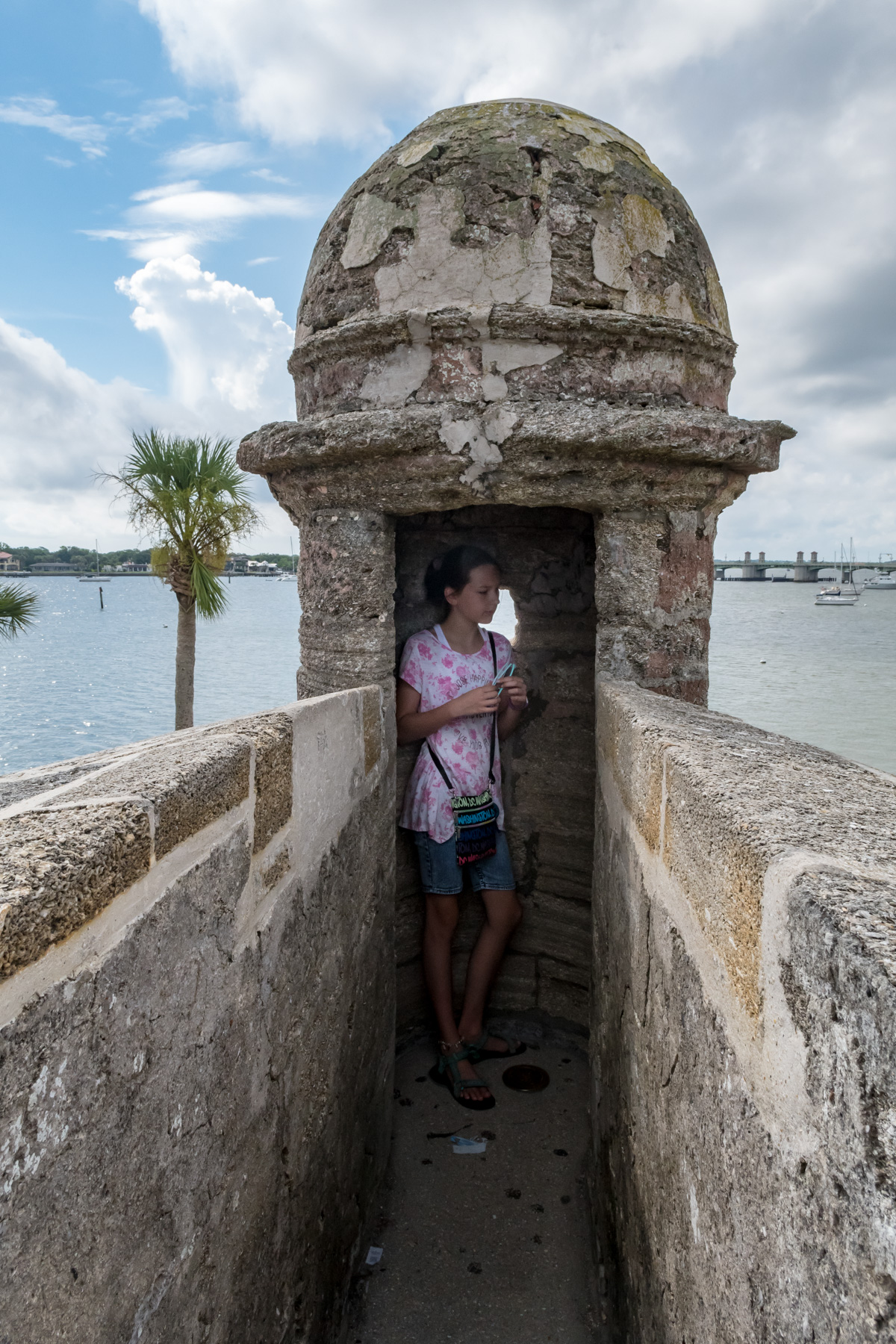
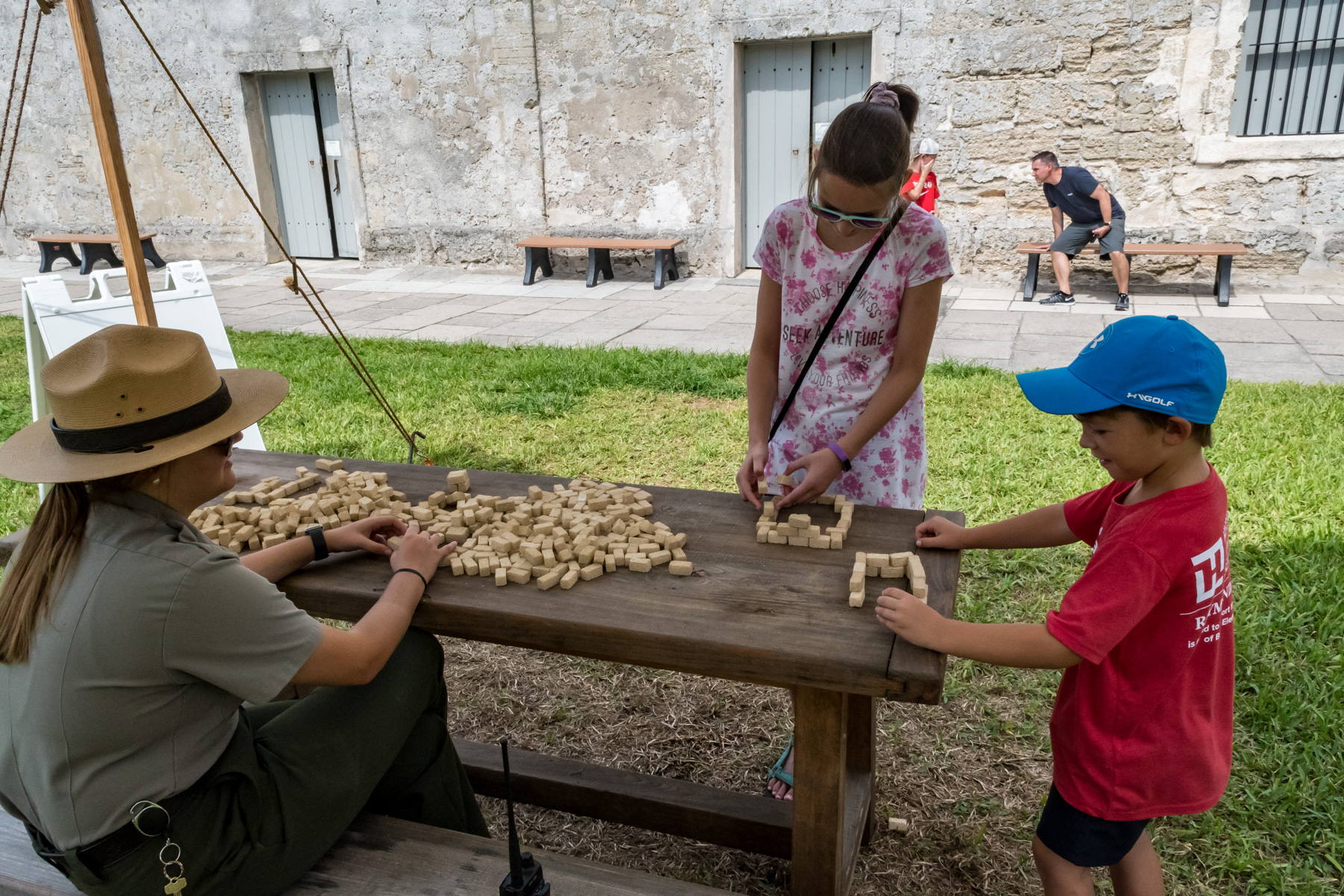
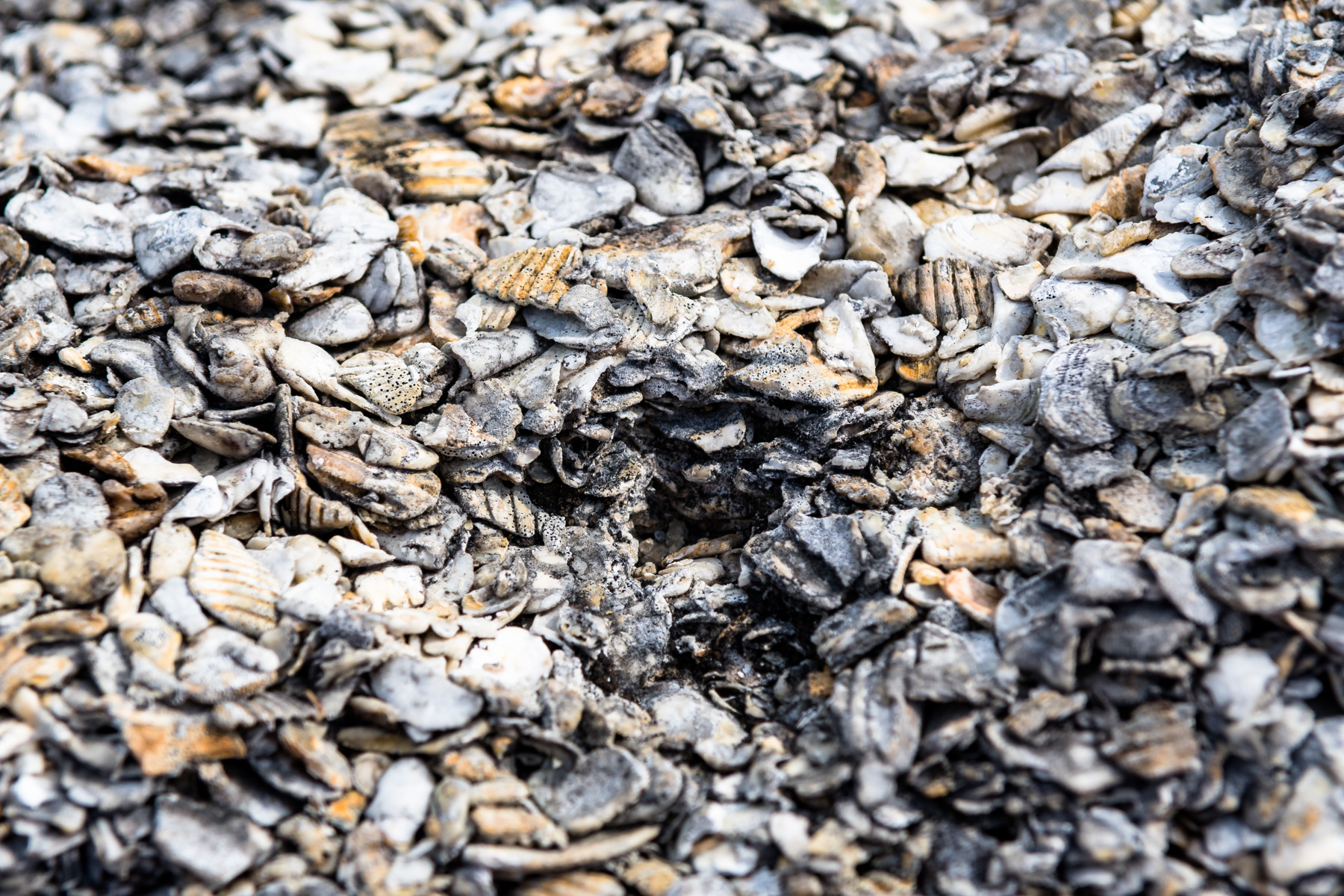
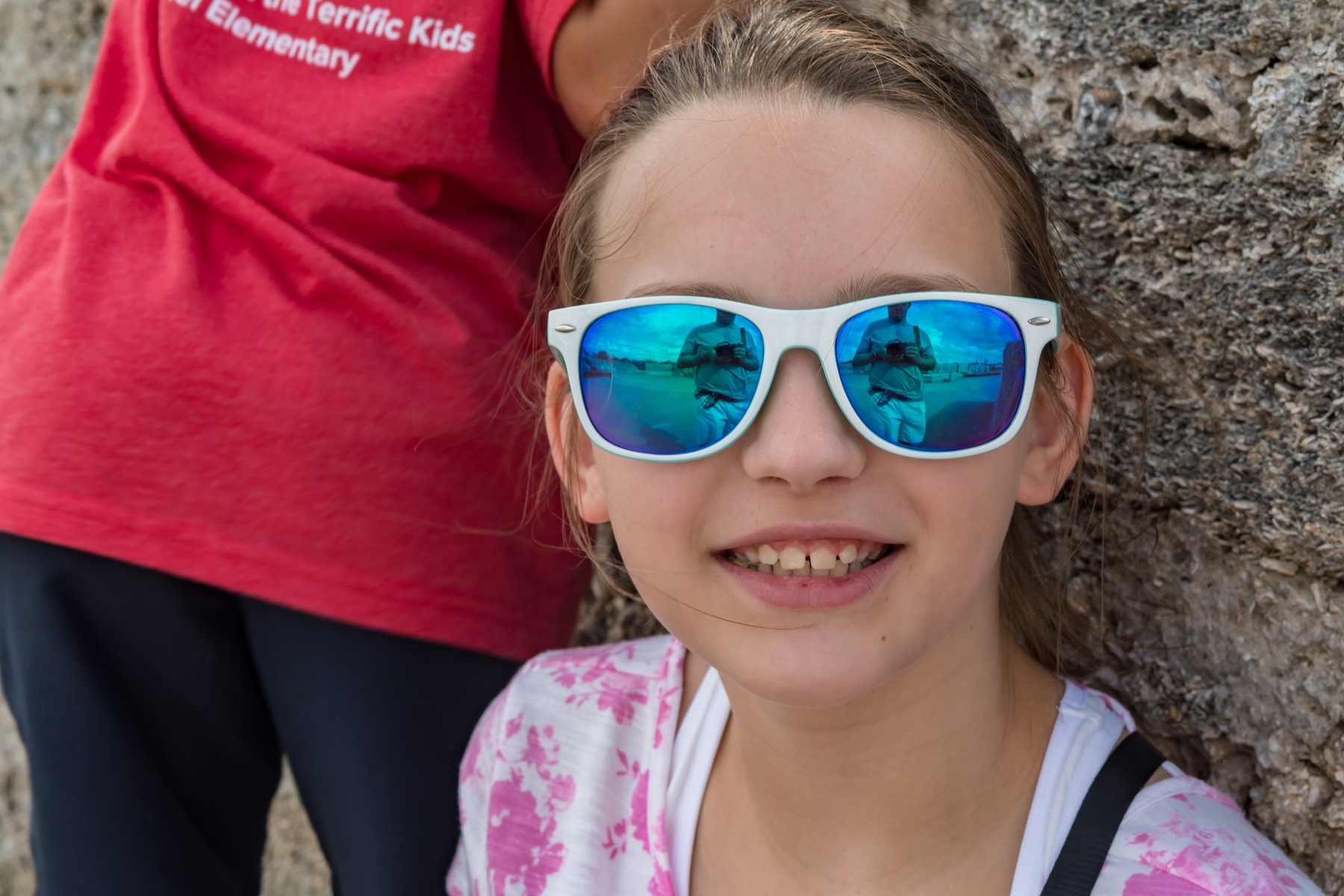
The fort itself was constructed of coquina, which is essentially a sedimentary rock made of compacted shells. It had to be pulled out of the ground — not quite mined, not quite quarried — and then left to dry for up to two years. When you look closely at the walls of the fort, then, you essentially millions upon millions of tiny shells and shell fragments. Though it could take a direct hit from cannon fire, the coquina, according to the masons who built the fort, could crumble in one’s hands.
The Boy was fascinated with the cannons; the Girl was fascinated with very little.
Oldest Wooden School House
Described as a “historic cedar-and-cypress building offering a glimpse of school life in Spanish Colonial times,” the old school house on St. George Street provided some insight into how much the education system in the States has changed.
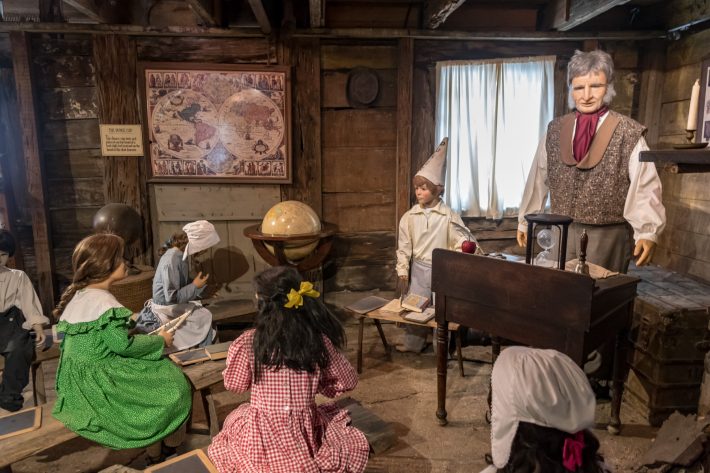
For one thing, there was the method of dealing with troubling students: slow learners got to wear the dunce cap; students showing disruptive behavior were put in a small space under the stairwell leading up to the teacher’s private quarters. We deal with such learnings in a more humane way these days.
The other difference is how the education was funded. Each student had to pay some sum for each week’s instruction. If a family couldn’t afford to pay with money, they had to barter with the teacher. Today, we have free universal education, a system that at one time would have, no doubt, been labeled as socialist but somehow today seems acceptable, even beneficial.
Pirate Museum
What’s a pirate? What’s a sea captain? It seems that it’s like a terrorist: one man’s terrorist is another’s hero. One country’s sea captain is often another’s pirate.
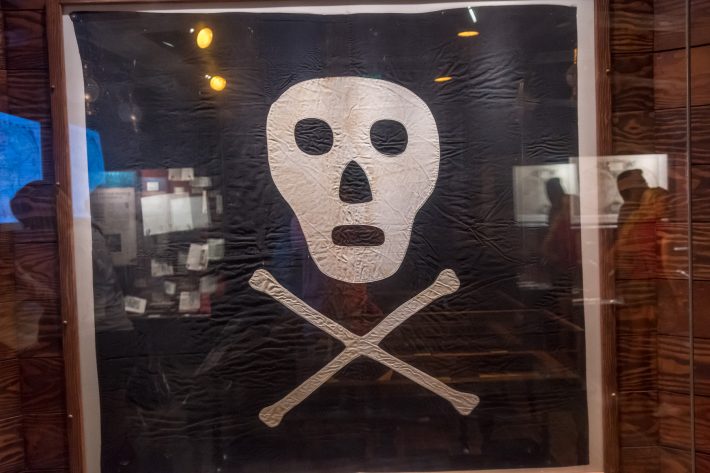
We learned that a fair amount that we thought we knew about pirates as, predictably, false. Much of it seemed like those things we learn to be myths about which we later think, “That’s obviously a stupid thing to believe. How could such an idiotic idea take hold?” Take for example the idea of attacking a ship with the Jolly Roger flying, cannons and muskets firing. It’s just silly, the guide explained. What if the pirate ship gets a lucky shot? The vessel they’re trying to loot sinks, along with all its booty. What if the attacked ship gets a lucky shot? The pirate vessel sinks, along with all its crew. Instead, pirates flew the same flag as the target ship and ran up the Jolly Roger only at the last minute as a sort of psychological terrorism for the victims. And killing all the people aboard the ship? How would they get the word out about how terrifying the pirates were? Better to torture or kill a few crew members then send the rest on their way.
The greatest irony of the museum? On display was Captain Kidd’s family Bible, one of the older existing copies of the King James version. On the other hand, perhaps not quite so ironic: some of the carnage of the Old Testament would make Kidd’s adventures seem almost playful.
Anastasia Beach
This was our third day at the beach. We’ve all been impressed with the size of the waves compared to those on our SC beaches, but today, they were positively enormous. The lifeguard had put on a red condition flag: hazardous. We soon saw why: enormous waves and a couple of obvious rip tides on the beach. We kept the kids close to the shore and close to us, and an enormous advantage became clear: with such huge waves, even the lingering moments of waves were good enough for the kids to boogie board.
I, of course, took on some of the large waves a bit further out. I learned a couple of things. They’re brutal when trying to ride them on a boogie board: they tend to toss you around like a rag doll if you hit the wave too late. The second thing I learned: the force of relatively small waves can be enormous, which put into perspective the tsunamis that hit the Indian Ocean in 2004 and the Japanese tsunami of 2011: the waves rushing in look to be only a few feet tall in the videos and, they are indeed. However, knowing how those relatively small waves today knocked me back, even when I dove under, even when I tried to crest them by diving over them — I cannot imagine the terror the victims of those tsunamis experienced.
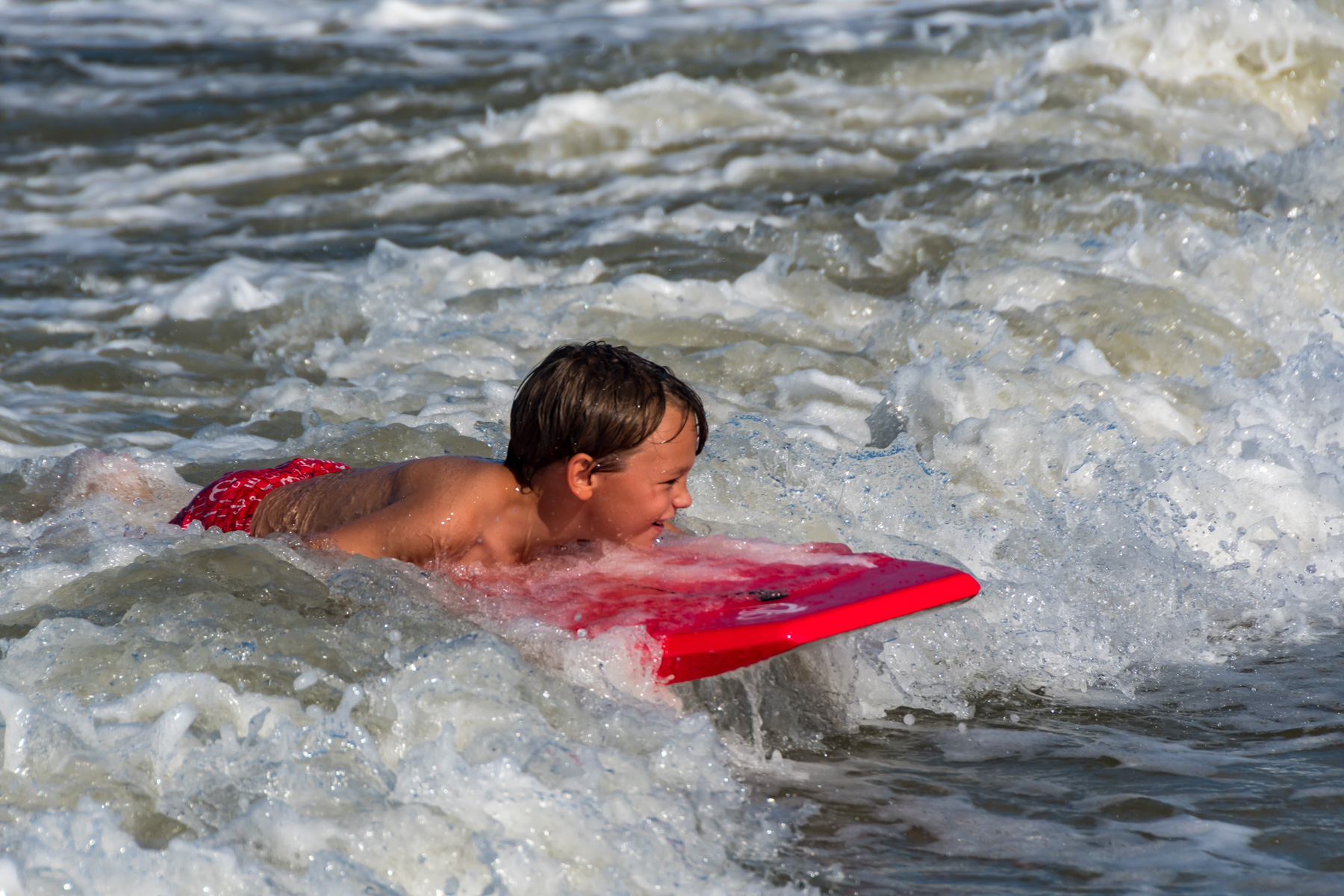
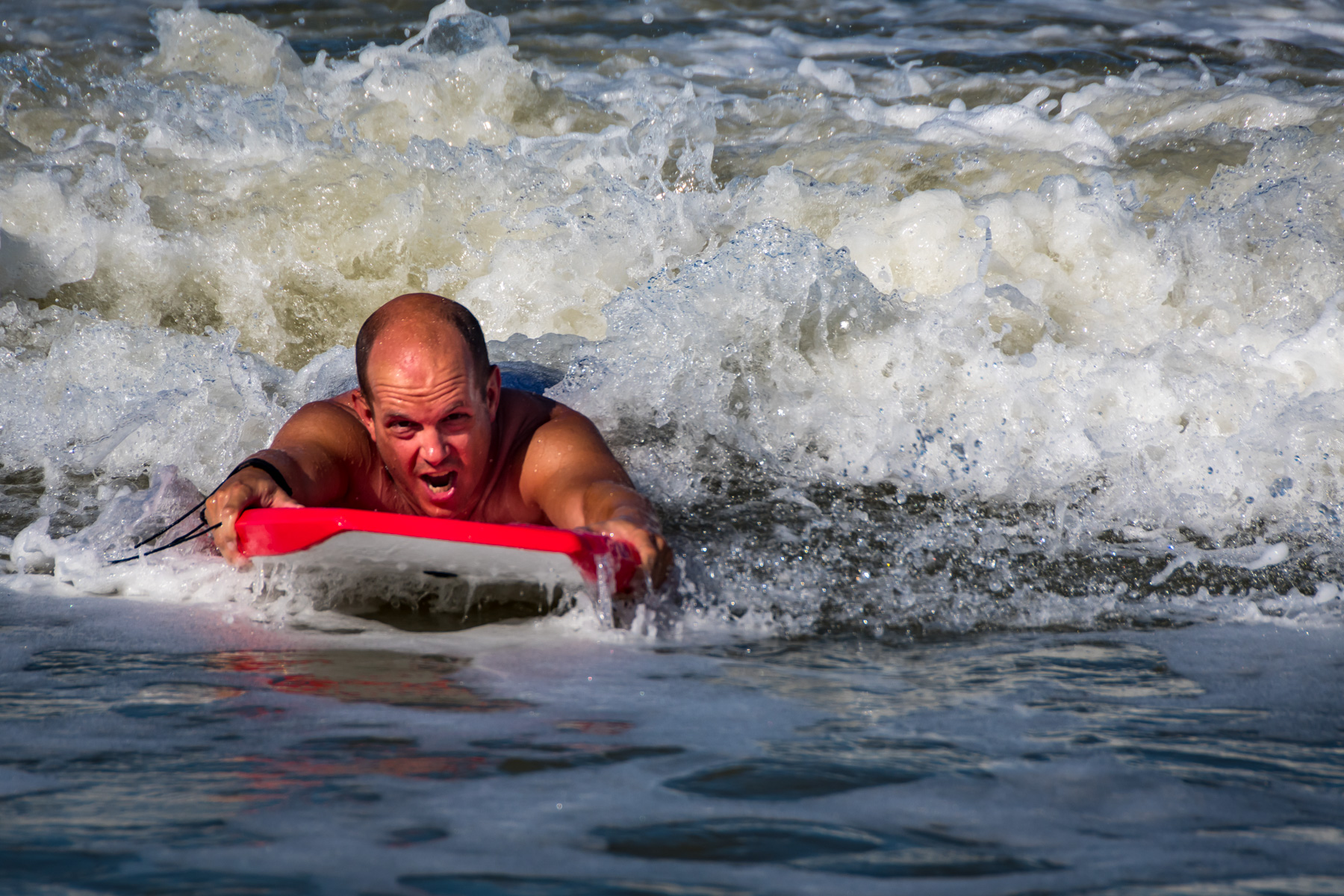

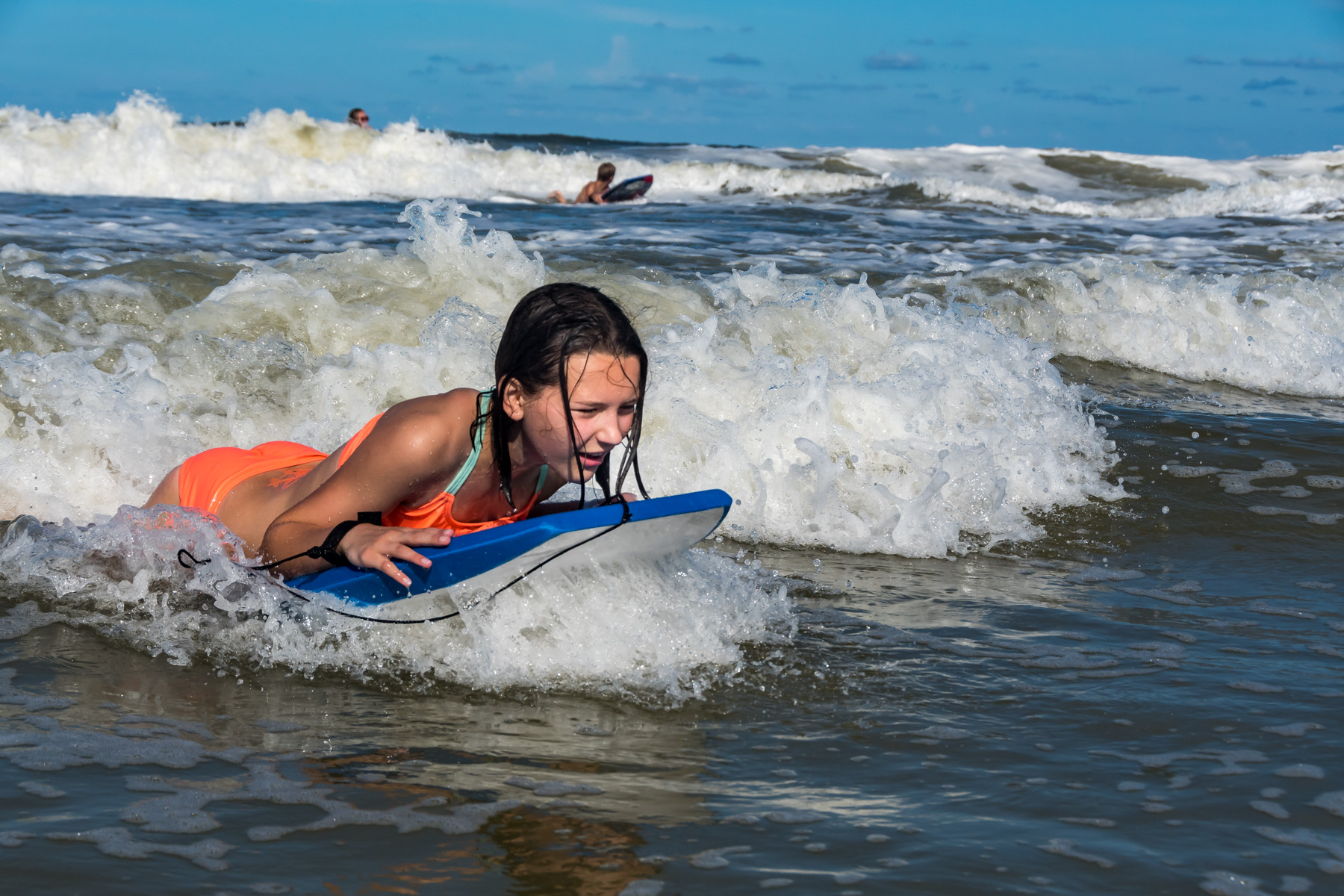
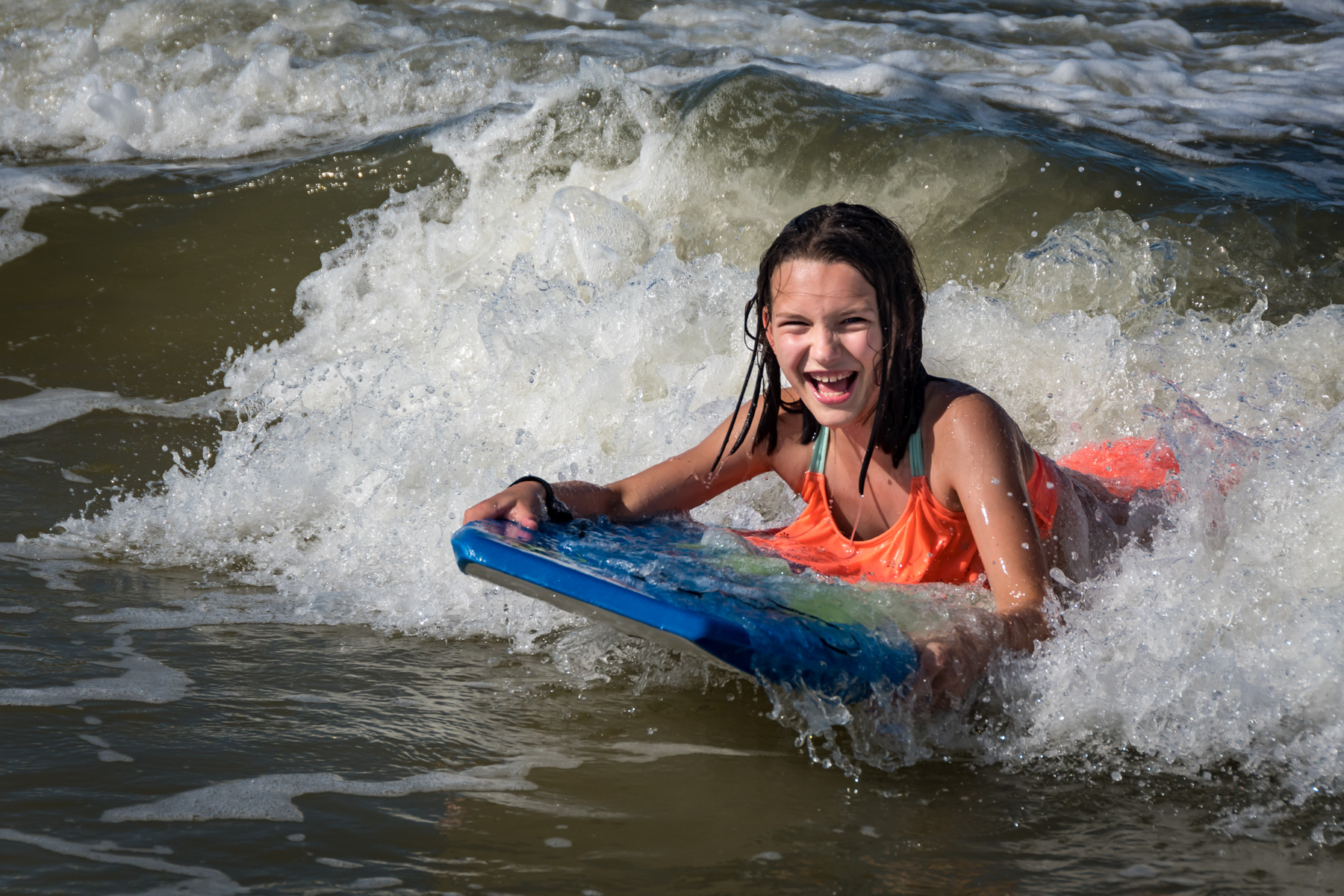
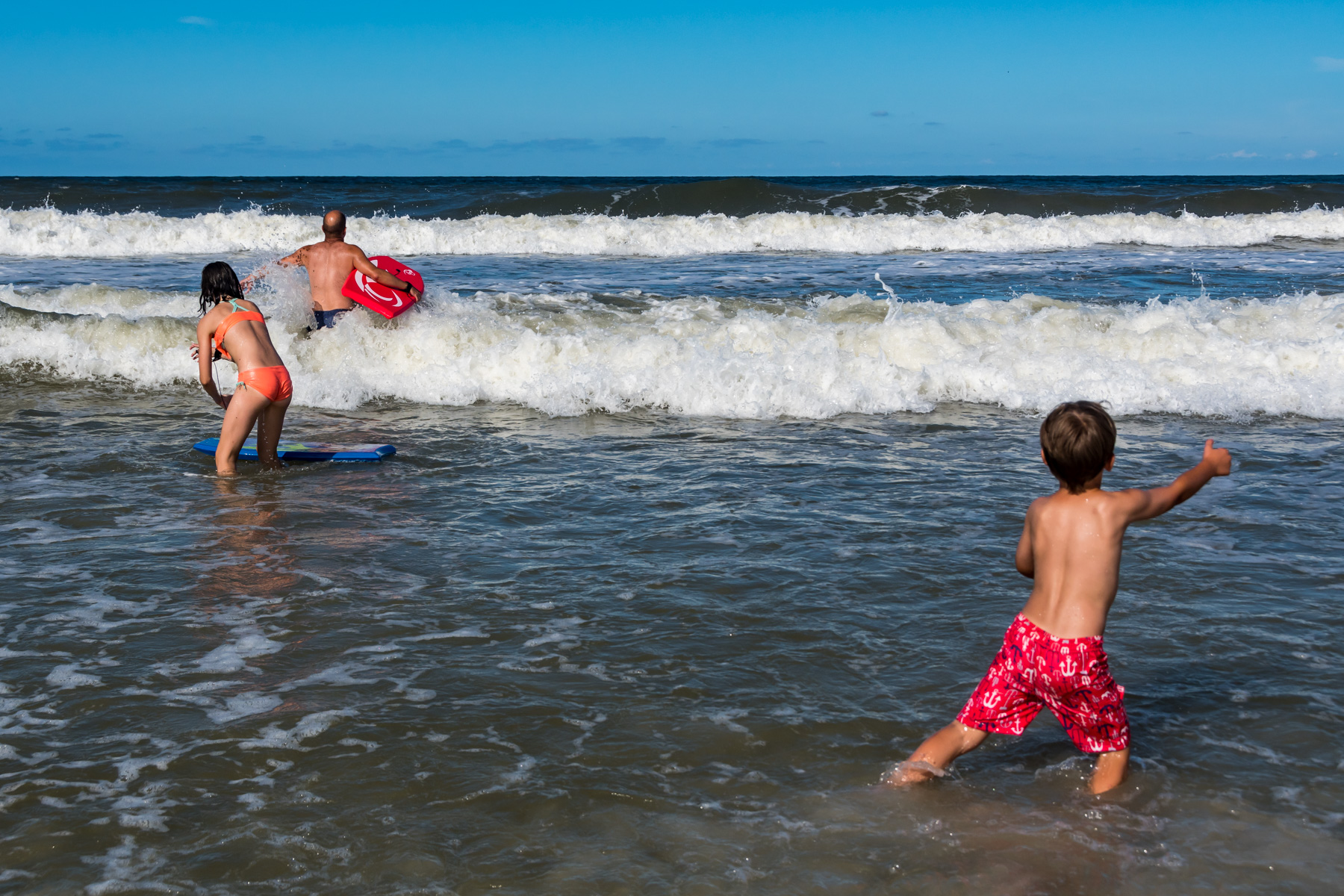
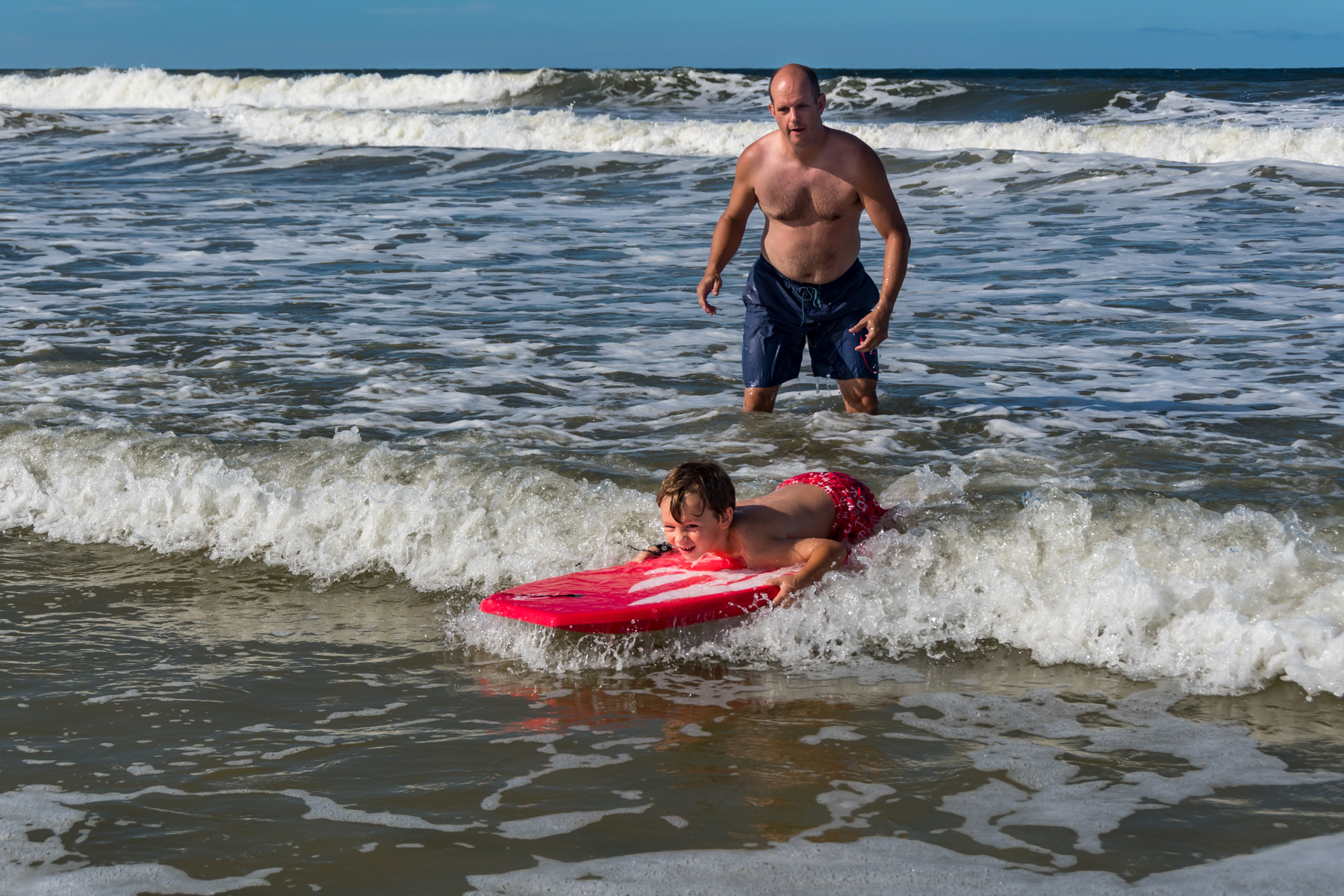
As in Warsaw last year, I couldn’t shake the thoughts of what horror that is for parents when they cannot protect their children from evil. We take for granted in the Western world that things like that don’t happen to us.
Depressing thoughts to have on a vacation, but such thoughts also always remind me of how fortunate, how simply lucky we are to have the life we live.